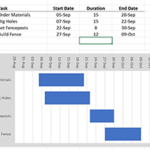
Missing deadlines reflects poorly on a project manager. With few exceptions, deadlines are a major component of project success. Because projects are by definition temporary, someone has authorized the project and expects its deliverables in a timely fashion. A schedule management plan is a subset of the project management plan whose purpose is to put into place the … [Read more...]













